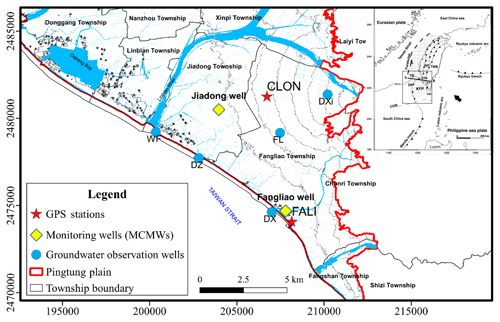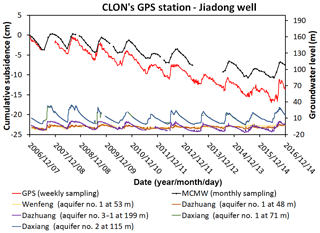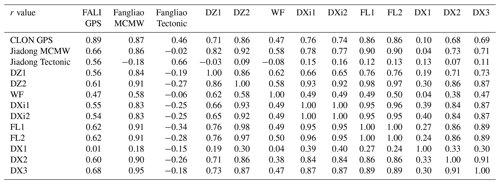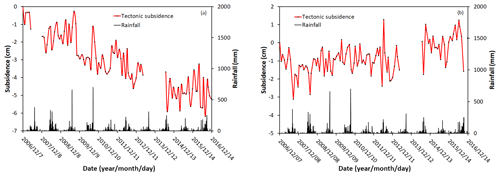Land subsidence due to groundwater extraction and tectonic activity in Pingtung Plain, Taiwan
Pingtung coastal plain, located at the active convergent boundary between Philippine Sea Plate and Eurasian Plate, is one of the most active areas regarding tectonic deformation in Taiwan. Groundwater over-pumping for aquaculture along the coast area of Pingtung plain induced a serious land subsidence problem for decades. How much land subsidence contributed by tectonic activity and groundwater pumping is a crucial issue for tectonic study and groundwater management in this area. This study collected the data in different fields and proposed a conceptual model to calculate the quantities of land subsidence caused by natural (tectonic) and human (pumping) factors. The data from the Global Positioning System (GPS) are used to illustrate the total subsidence concerning vertical displacement. A system called the multi-level compaction monitoring well (MCMW) is able to measure the vertical compaction in different depths from the earth surface to the depth of 200 m. Two GPS stations, named CLON and FALI, close to two MCMWs, named Jiadong and Fangliao, are adopted for analysis The data during 2007 and 2016 taken from MCMWs and groundwater observation wells indicate that the compaction in the shallow depth should be mainly caused by groundwater over-pumping due to their high correlation coefficients (from 0.58–0.95). The difference of the vertical deformation between GPS and MCMW indicates that there is deformation beyond the depth within 200 m. From the data and literature, the further vertical deformation should be due to tectonic activity associated with tectonic escape and extrusion of the Taiwan orogen with average vertical deformation from −3.0 to −4.4 mm. Therefore, the quantities of land subsidence contributed by local groundwater over-pumping and regional tectonic activities are successfully separated. The method and concept proposed in this study can be used in land subsidence quantification due to both tectonic activity and groundwater over-pumping.









